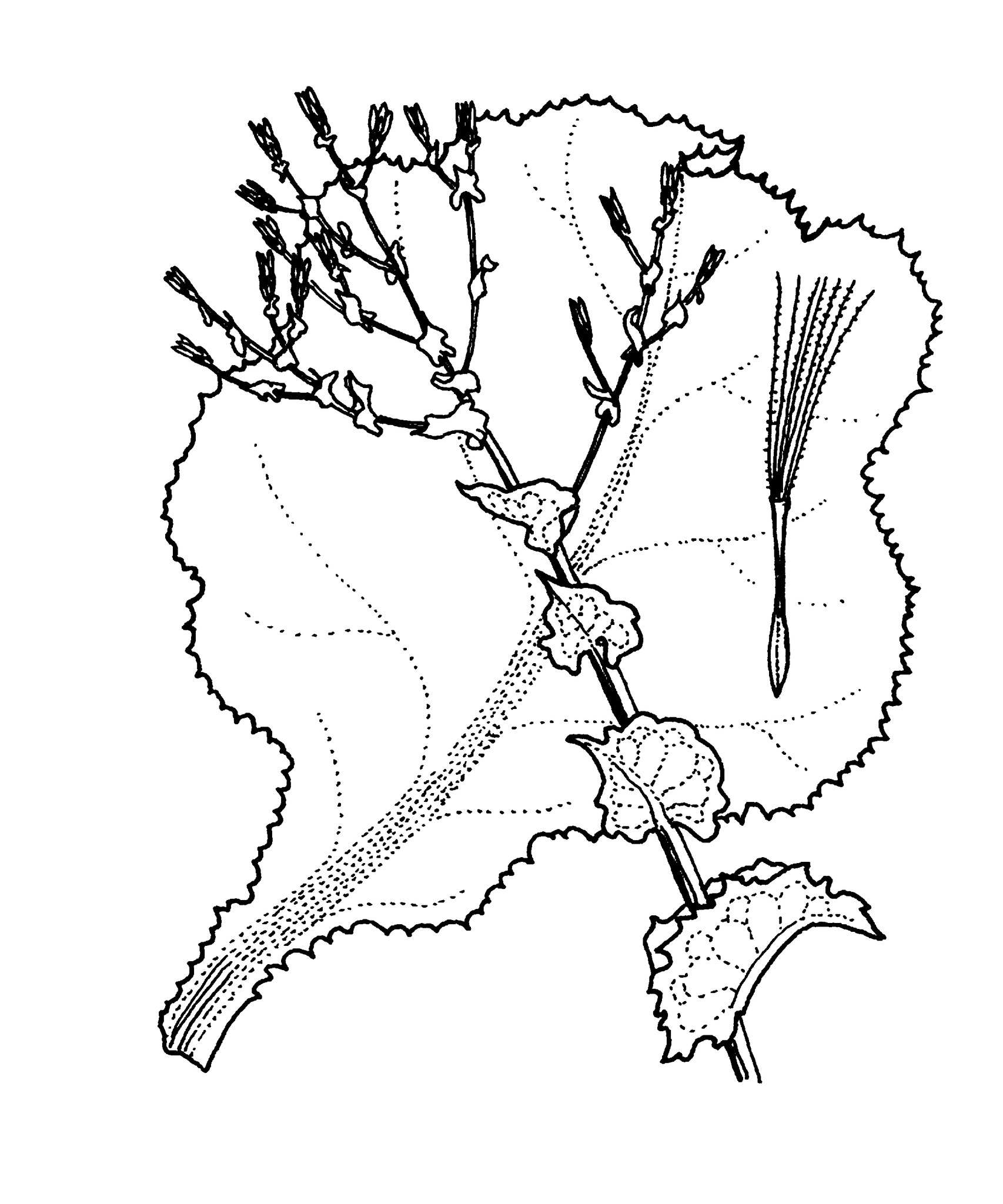
Annual herb to 1.3 m tall, glabrous. Stems erect, branched above. Basal leaves nearly round to oblong, to 25 cm long and wide, crisp, tightly overlapping, margins entire, toothed or divided, shortly petiolate, appearing before the flower stalk. Stem leaves smaller and narrower, stem-clasping, sessile. Capitula many in terminal corymbs, to 1.5 cm across; summer. Florets pale yellow, often streaked with violet. Achenes 6-8 mm long, beak as long as body.
Origin uncertain but probably from the Middle East
L. sativa L. has been in cultivation for many years dating back at least to the Romans and probably further to the Egyptians, c. 4500 BC. It is not known in the wild and is therefore probably a cultigen, possibly derived as a clonal selection from L. serriola L. It is commonly grown for the basal leaves, which are used as a salad vegetable, and is possibly one of the very few vegetables that is eaten exclusively as a fresh, uncooked product. Growth is best in cool temperatures.
The different cultivars are sometimes grouped into
Over 120 cultivars are listed in Australia where, until the 1980s, the Head or Crisphead (Iceberg) varieties were grown almost exclusively. Now there are also Leaf lettuces, which may be ruffled or smooth, red or green, crisp or soft and do not form heads; and Butterhead lettuces, which have large, open heads and oily, butter-flavoured leaves.
Victoria is the largest producer, with production centred around Werribee and Cranbourne, and Queensland also produces large quantities.
Source: (2002). Dahlia. In: . Horticultural Flora of South-eastern Australia. Volume 4. Flowering plants. Dicotyledons. Part 3. The identification of garden and cultivated plants. University of New South Wales Press.
